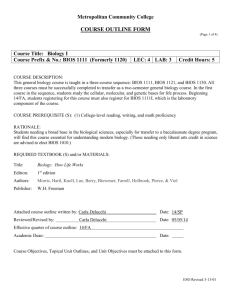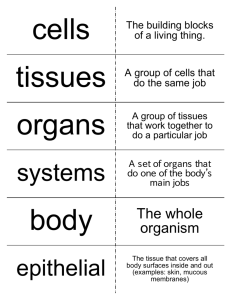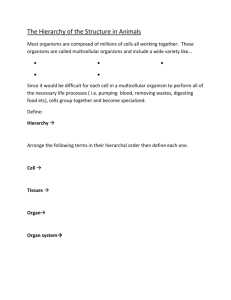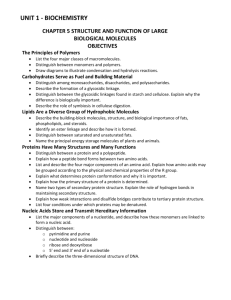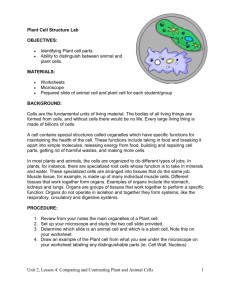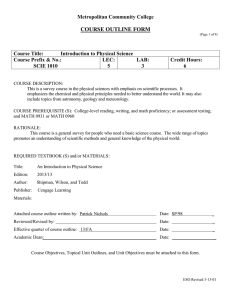Human Anatomy and Physiology I - Metropolitan Community College
advertisement
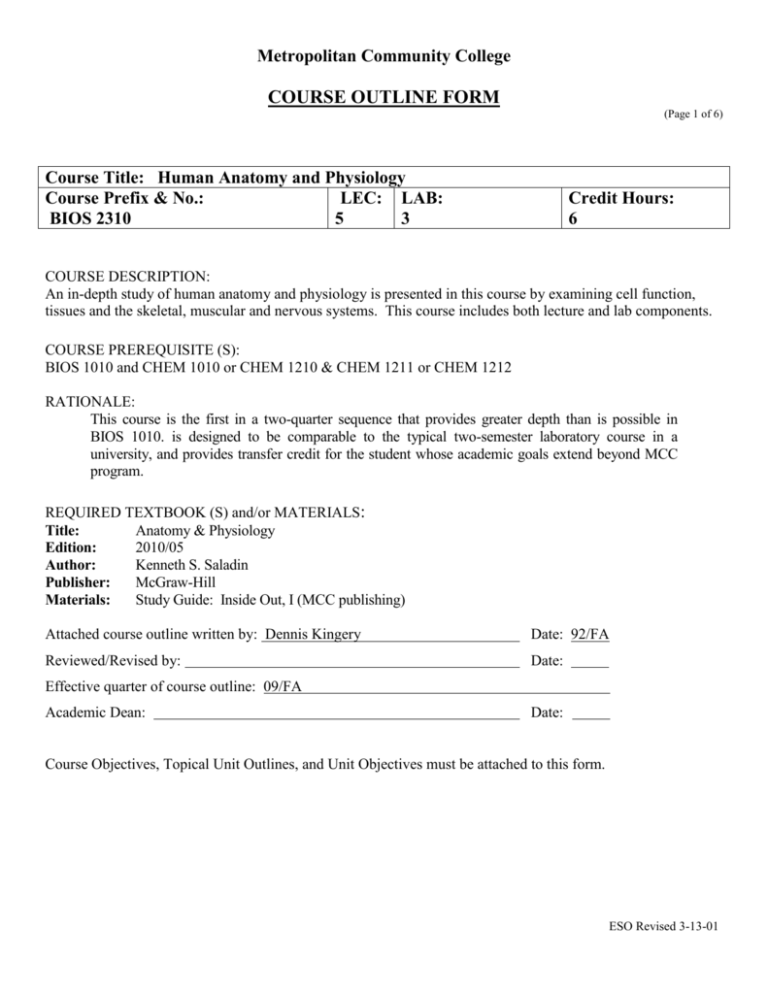
Metropolitan Community College COURSE OUTLINE FORM (Page 1 of 6) Course Title: Human Anatomy and Physiology Course Prefix & No.: LEC: LAB: BIOS 2310 5 3 Credit Hours: 6 COURSE DESCRIPTION: An in-depth study of human anatomy and physiology is presented in this course by examining cell function, tissues and the skeletal, muscular and nervous systems. This course includes both lecture and lab components. COURSE PREREQUISITE (S): BIOS 1010 and CHEM 1010 or CHEM 1210 & CHEM 1211 or CHEM 1212 RATIONALE: This course is the first in a two-quarter sequence that provides greater depth than is possible in BIOS 1010. is designed to be comparable to the typical two-semester laboratory course in a university, and provides transfer credit for the student whose academic goals extend beyond MCC program. REQUIRED TEXTBOOK (S) and/or MATERIALS: Title: Anatomy & Physiology Edition: 2010/05 Author: Kenneth S. Saladin Publisher: McGraw-Hill Materials: Study Guide: Inside Out, I (MCC publishing) Attached course outline written by: Dennis Kingery Date: 92/FA Reviewed/Revised by: Date: Effective quarter of course outline: 09/FA Academic Dean: Date: Course Objectives, Topical Unit Outlines, and Unit Objectives must be attached to this form. ESO Revised 3-13-01 Metropolitan Community College COURSE OUTLINE FORM (Page 2 of 6) TITLE: Human and Physiology PREFIX/NO: BIOS 2310 COURSE OBJECTIVES: Three general themes will be emphasized throughout the quarter, the student will be expected to: 1. Explain how the design of a body structure makes its function possible or more efficient. 2. Explain how the various body systems are interrelated in structure and in function. 3. Explain how the body's structures help maintain a constant internal environment. TOPICAL UNIT OUTLINE/UNIT OBJECTIVES: I. THE FRAMEWORK Skeleton: 1. 2. 3. Identify individual bones on sight by standard name, both within the skeleton and apart from it. Identify bone processes by their standard names. Distinguish male and female skeletons. 4. 5. Explain how the structure of bone makes its function possible. Explain factors influencing homeostasis of bone. 6. 7. 8. Distinguish major types of joints and provide examples of each. Explain how the structure of a joint determines its action. Explain the contributions of connective tissues to the actions of the various types of joints. Bone: Joints: Biomechanics: 9. 10. 11. Explain how lever systems produce skeletal movements, and provide examples. Explain the factors contributing to stability in upright posture. Apply principles of mechanics to the safe and efficient operation of the skeletal system. ESO Revised 3-13-01 Metropolitan Community College COURSE OUTLINE FORM (Page 3 of 6) II. ORGANIZATION Using the Microscope: 1. 2. Use the microscope efficiently and effectively. Distinguish between light and electron microscopy in their methods and results. 3. Distinguish among the cell, tissue, organ and organ system as structural and functional units of the body. Explain the functions of major parts of a typical cell. Explain the complementarily of structure and function exhibited in cellular structures. Cells: 4. 5. Tissues: 6. 7. 8. 9. Identify tissue types and name examples of each. Recognize tissues microscopically. Explain the complementarily of structure and function exhibited in various tissues. Explain the contribution of tissues to the function of organs they compose. 10. 11. 12. Recognize microscopically the major components of skin. Explain the homeostatic functions of skin. Explain the complementarily of structure and function exhibited in skin structures. Skin: III. LIVELY MOLECULES Organic Molecules: 1. 2. 3. Sketch structural representations of molecules of sugar, starch, cellulose, fat, and protein. Identify the components of the above organic molecules. Explain the biological functions of the above molecules. Movement of Molecules: 4. 5. 6. Explain factors governing molecule movement. Predict flow of molecules when conditions are defined. Distinguish between diffusion and active transport. Enzymes: 7. 8. Explain how enzymes influence chemical reactions. Identify factors influencing enzyme activity. ESO Revised 3-13-01 Metropolitan Community College COURSE OUTLINE FORM (Page 4 of 6) Metabolism: 9. 10. 11. Summarize the process of cellular respiration, including reactants and products. Explain how chemical energy from food is stored by cellular respiration. Distinguish aerobic and anaerobic respiration. Control Mechanisms: 12. 13. 14. 15. Explain how genetic information is stored in DNA molecules. Explain how proteins are synthesized. Explain how DNA molecules replicate themselves. Explain typical consequences of alteration of the DNA code. IV. COORDINATION Reflex Arc: 1. 2. Explain the operation of a reflex arc and the functional contributions of its components. Describe the mechanism of impulse transmission through a nerve and across the synapse. Nervous system: 3. 4. 5. Identify the major organs of the nervous system and explain their functions. Explain how the structure of the tissues and organs of the nervous system makes their functions possible. Explain, with examples, how the autonomic functions of the nervous system aid homeostasis. Senses: 6. 7. 8. 9. 10. Follow the path of light through the eye, explaining the role of all structures in focusing an image and transmitting nerve impulses. Explain how the structures of the ear transform sound vibrations into nerve impulses. Explain how sense organs are structured appropriately to function in sensing touch, taste, smell, and position. Explain, with examples, the phenomenon of adaptation of the senses. Evaluate the possibility that biofeedback can be used to control certain body functions. V. MOVEMENT Muscles and Their Actions: 1. 2. 3. Analyze the movement of the skeleton as the coordinated action of opposing muscle pairs, and provide examples of such pairs. Identify on a model major muscles and important features of each: origin, insertion, and action. Given a movement, identify the muscular-skeletal components responsible. ESO Revised 3-13-01 Metropolitan Community College COURSE OUTLINE FORM (Page 5 of 6) Muscle Tissue: 4. 5. Distinguish the types of muscle structurally, functionally, and by typical locations in the body. Recognize the types of muscle microscopically. Muscle Cell Activity: 6. 7. 8. Explain how the structure of muscle cells accounts for their ability to contract. Explain the chemical process by which muscles contract. Explain the events that occur during a single muscle twitch, and represent them on a graph. Conversely, interpret graphs of muscle twitch phenomena. Interference with Normal Contraction: 9. Explain how certain substances and disease conditions interfere with muscle contraction. ESO Revised 3-13-01 Metropolitan Community College COURSE OUTLINE FORM (Page 6 of 6) COURSE REQUIREMENTS/EVALUATION: Each instructor develops a testing/grading plan, described in the syllabus for his/her class section. That plan should include the expectation that students demonstrate thinking skills beyond memorization of facts: comprehension, application, analysis, synthesis, and evaluation. The student should be expected to demonstrate these abilities, at least in part, in writing. Testing should also be based, in part, on laboratory methods and materials. COURSE OBJECTIVES/ASSESSMENT MEASURES COURSE OBJECTIVES ASSESSMENT MEASURES 1. Explain how the design of a body structure makes its function possible or more efficient. 1. 2. Explain how the various body systems are interrelated in structure and in function. 2. 3. Explain how the body’s structures help maintain a constant internal environment. 3. ESO Revised 3-13-01

